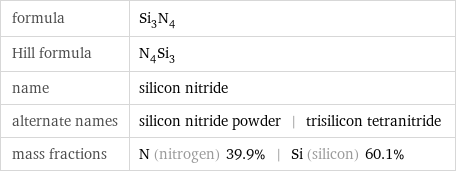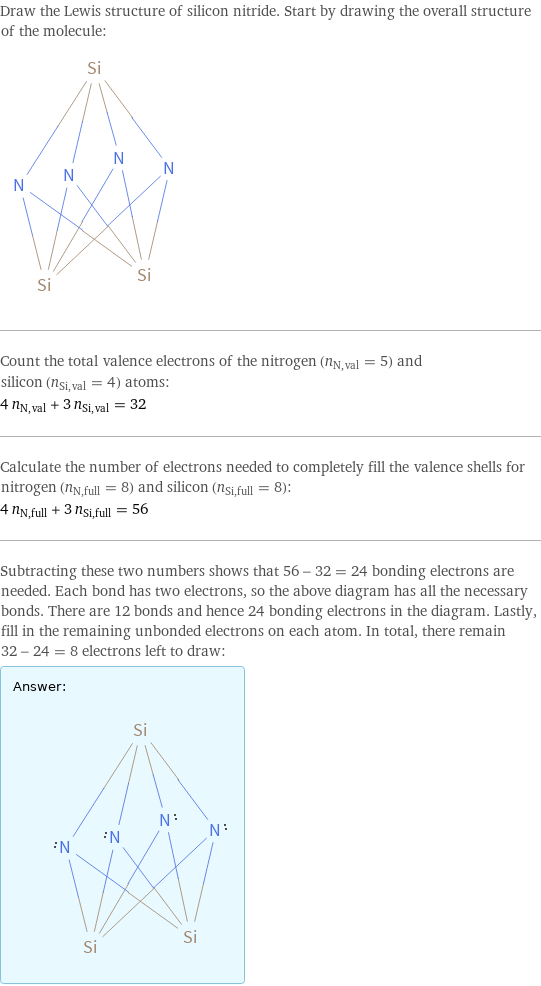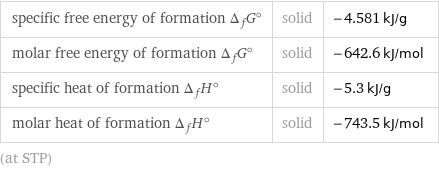Input interpretation

silicon nitride
Chemical names and formulas

formula | Si_3N_4 Hill formula | N_4Si_3 name | silicon nitride alternate names | silicon nitride powder | trisilicon tetranitride mass fractions | N (nitrogen) 39.9% | Si (silicon) 60.1%
Lewis structure

Draw the Lewis structure of silicon nitride. Start by drawing the overall structure of the molecule: Count the total valence electrons of the nitrogen (n_N, val = 5) and silicon (n_Si, val = 4) atoms: 4 n_N, val + 3 n_Si, val = 32 Calculate the number of electrons needed to completely fill the valence shells for nitrogen (n_N, full = 8) and silicon (n_Si, full = 8): 4 n_N, full + 3 n_Si, full = 56 Subtracting these two numbers shows that 56 - 32 = 24 bonding electrons are needed. Each bond has two electrons, so the above diagram has all the necessary bonds. There are 12 bonds and hence 24 bonding electrons in the diagram. Lastly, fill in the remaining unbonded electrons on each atom. In total, there remain 32 - 24 = 8 electrons left to draw: Answer: | |
Basic properties

molar mass | 140.28 g/mol phase | solid (at STP) melting point | 1900 °C density | 3.44 g/cm^3
Units

Solid properties (at STP)

density | 3.44 g/cm^3
Units

Thermodynamic properties

specific free energy of formation Δ_fG° | solid | -4.581 kJ/g molar free energy of formation Δ_fG° | solid | -642.6 kJ/mol specific heat of formation Δ_fH° | solid | -5.3 kJ/g molar heat of formation Δ_fH° | solid | -743.5 kJ/mol (at STP)
Chemical identifiers
![CAS number | 12033-89-5 PubChem CID number | 3084099 PubChem SID number | 24854940 SMILES identifier | N12[Si]34N5[Si]16N3[Si]25N46 InChI identifier | InChI=1/N4Si3/c1-5-2-6(1)3(5)7(1, 2)4(5)6 MDL number | MFCD00011230](../image_source/0e1e14cedf3fe0af7bb22b84c2fc47ab.png)
CAS number | 12033-89-5 PubChem CID number | 3084099 PubChem SID number | 24854940 SMILES identifier | N12[Si]34N5[Si]16N3[Si]25N46 InChI identifier | InChI=1/N4Si3/c1-5-2-6(1)3(5)7(1, 2)4(5)6 MDL number | MFCD00011230